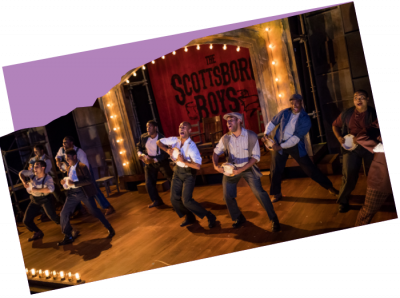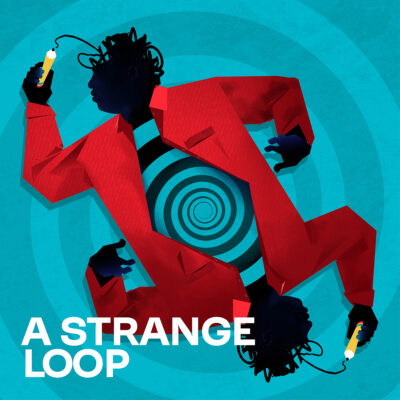Your donation sets the stage for a new season of Boston's most intimate, entertaining and provocative plays and musicals. Our shows make powerful connections with our audiences-- and they are only possible because of you.
Nuns on the Silver Screen
Nuns on the Silver Screen
Nuns on the Silver Screen
 The Divine Sister is set in the mid-sixties, when nuns were ubiquitous in the community, fixtures in education and medicine, and well-represented in of some of Hollywood’s most successful mid-century movies. This was a time when a nun could be a true cinema hero—not the butt of a joke or a criminal in disguise—but a brave, sensitive woman filled with heart and intelligence. Perhaps the ultimate women’s films, the popularity of nun movies stems in part from the fact that, between the end of World War II to the emergence of women’s liberation in the seventies, nuns were a terrific dramatic device to tell stories about women that weren’t focused on getting or keeping a man. The hierarchies in these stories were all female, and nuns could be sent to the remotest parts of the planet and still tell believable tales. The Divine Sister lovingly spoofs these films—and takes a few jabs at some more contemporary ones too.
The Divine Sister is set in the mid-sixties, when nuns were ubiquitous in the community, fixtures in education and medicine, and well-represented in of some of Hollywood’s most successful mid-century movies. This was a time when a nun could be a true cinema hero—not the butt of a joke or a criminal in disguise—but a brave, sensitive woman filled with heart and intelligence. Perhaps the ultimate women’s films, the popularity of nun movies stems in part from the fact that, between the end of World War II to the emergence of women’s liberation in the seventies, nuns were a terrific dramatic device to tell stories about women that weren’t focused on getting or keeping a man. The hierarchies in these stories were all female, and nuns could be sent to the remotest parts of the planet and still tell believable tales. The Divine Sister lovingly spoofs these films—and takes a few jabs at some more contemporary ones too.
It’s no surprise that for many of us, The Sound of Music (1965) is what springs to mind first when we think of movie nuns. After all, it is one of the most popular movies of all time, and, beginning in 1979, aired annually on NBC for twenty years running. While there are some great shots of the Nonnberg Abbey in Salzburg where Maria von Trapp was a postulant, the movie doesn’t reveal much about what really goes on inside those walls.
For that, we turn to The Nun’s Story (1959), adapted from the novel by Kathryn Hulme and starring Audrey Hepburn as Sister Luke. The movie provides an unusual glimpse into the centuries-old process designed to redirect the independent nature of young women to a life of personal spirituality and service to God. Dancers from the Rome Opera Ballet corps were hired to play nuns in the early scenes of the film, which were choreographed to capture the complex convent rituals.
Charles Busch loved The Nun’s Story growing up, as well as two other films from the previous decade with a strong spiritual element:
 The Song of Bernadette (1943) offers a young Jennifer Jones, who won an Oscar for her portrayal of Bernadette Soubirous, whose visions became known as the Miracle of Lourdes. The novel by Franz Werfel, that was the basis of the film, spent more than a year on the New York Times Best Seller List, clocking 13 weeks in first position.
The Song of Bernadette (1943) offers a young Jennifer Jones, who won an Oscar for her portrayal of Bernadette Soubirous, whose visions became known as the Miracle of Lourdes. The novel by Franz Werfel, that was the basis of the film, spent more than a year on the New York Times Best Seller List, clocking 13 weeks in first position.
The Bells of St. Mary’s (1945), that year’s highest grossing movie, starred Ingrid Bergman as Mother Superior and Bing Crosby as her nemesis Father O’Malley, a role he reprised from Going My Way (1943) that had won him the Academy Award. Forced to work together to save a soon-to-be condemned New York City Catholic school, the pair seeks financial support from the irascible businessman who owns the office building next door. One of his favorite films, Martin Scorsese says he cries every time he watches it.
Although set in 1964, a more recent film that also pits a traditional nun against a charismatic priest who’s more in touch with the community is Doubt (2008), John Patrick Shanley’s own adaptation of his Tony and Pulitzer Prize-winning play. Cherry Jones won the Best Actress Tony for her portrayal of Sister Aloysius on stage; Meryl Streep, her counterpart in the film, received the Critics Choice Award.
Another element sometimes found in nun movies is the conflict between the spirit and the flesh. The prime example would be Black Narcissus (1947), an erotically-charged British psychological drama starring Deborah Kerr and Kathleen Byron as the leaders of a small group of Anglican nuns sent to a remote Himalayan outpost to establish a school and infirmary in an abandoned brothel. The sensuality of their exotic environment and the disturbing presence of a handsome British agent lead to harrowing outcomes.
Kerr begins to dwell on a romance she had as a young woman before entering the convent, and Byron loses it completely in all-stops-out, sex-starved insanity. Kerr’s flashback scenes were removed for the original U.S. release so as not to offend the Catholic Legion of Decency.
A much later film that deals with another young sister whose grasp on reality may be tentative is the mystery/thriller Agnes of God (1985). Sister Agnes (Meg Tilley) is a novice who gives birth to a baby under mysterious circumstances. The baby is found dead and a court-appointed psychiatrist (Jane Fonda) is sent to investigate. She must contend with Agnes’ protector, the Mother Superior (Anne Bancroft) who raises the possibility that a miraculous conception had occurred. The movie was adapted by John Pielmeier from his own 1982 play.
Another genre of nun movies that emerged in the 1960s — as Vatican II was taking hold and beginning to modernize the Catholic Church — was that of the madcap, fun-loving nun.
 The Trouble with Angels (1966) is a comedy that starred Hayley Mills as a rambunctious student at a Catholic boarding school under the thumb of Mother Superior Rosalind Russell. Best remembered now as Mame Dennis in Auntie Mame and a fast-talking newspaper reporter in His Girl Friday, Russell was a perfect choice for the part, given her air of authority and sense of humor. Directed by Ida Lupino, the film also featured Marge Redmond and Mary Wickes as teacher/nuns in the math classroom and the gym. When Hayley Mills opted out of doing the sequel, Where Angels Go, Trouble Follows (1968), she was replaced by Stella Stevens.
The Trouble with Angels (1966) is a comedy that starred Hayley Mills as a rambunctious student at a Catholic boarding school under the thumb of Mother Superior Rosalind Russell. Best remembered now as Mame Dennis in Auntie Mame and a fast-talking newspaper reporter in His Girl Friday, Russell was a perfect choice for the part, given her air of authority and sense of humor. Directed by Ida Lupino, the film also featured Marge Redmond and Mary Wickes as teacher/nuns in the math classroom and the gym. When Hayley Mills opted out of doing the sequel, Where Angels Go, Trouble Follows (1968), she was replaced by Stella Stevens.
The Singing Nun (1966), starring Debbie Reynolds, is a highly fictionalized account of the Belgian nun who became known as “Sister Smile” after she sang “Dominique” on The Ed Sullivan Show and it rose to the #1 spot on the Top 40 chart—only to be unseated by the Beatles. Greer Garson and Agnes Moorehead co-starred as fellow nuns. This was Reynolds’ last movie under her MGM contract.
In 1965, there were 180,000 nuns in the United States. Today that number has declined to around 70,000 and the average age of that population is 70.
–Suzanne Bixby
 Join us for spectacular season 33!
Join us for spectacular season 33! Past Productions
Past Productions a strange loop
a strange loop




